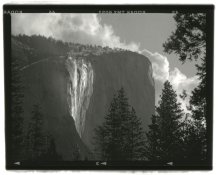Hello, so, I've been wanting to fulfill a lifelong dream and travel through all of Mexico's archaeological sites and photograph them using a medium format system. For this, I've been thinking about what to buy. So far, I know I'm going to need a normalesque lens and a wide angle. I've been looking at the RB67 system and I found a 50mm at a decent price (is this lens good, I've seen very mixed reviews).
I've also found a mamiya press universal and I've been thinking to buy into the system since the lenses are cheap enough to get them on ebay, this one comes with a 6x7 back and a 100mm lens.
I've also come across a Kowa system (I'm just not fond of 6x6 for this project in particular, since I'm very familiar with this because of my TLRs), and a Pentax 645 with a normal lens (not a big fan of electronics and also, more expensive lenses).
I've also read that the press system is nicer to shoot handheld than the RB67, is this any true? Would the lenses in this system be worth it? Shooting handheld is absolutely necessary since no tripods are allowed in many of these sites.
I'm not into a tight budget but also can't afford a Hassy system, sadly.
Any thoughts would be seriously considered and thanked!
I've also found a mamiya press universal and I've been thinking to buy into the system since the lenses are cheap enough to get them on ebay, this one comes with a 6x7 back and a 100mm lens.
I've also come across a Kowa system (I'm just not fond of 6x6 for this project in particular, since I'm very familiar with this because of my TLRs), and a Pentax 645 with a normal lens (not a big fan of electronics and also, more expensive lenses).
I've also read that the press system is nicer to shoot handheld than the RB67, is this any true? Would the lenses in this system be worth it? Shooting handheld is absolutely necessary since no tripods are allowed in many of these sites.
I'm not into a tight budget but also can't afford a Hassy system, sadly.
Any thoughts would be seriously considered and thanked!





 Medium Format Kits
Medium Format Kits
